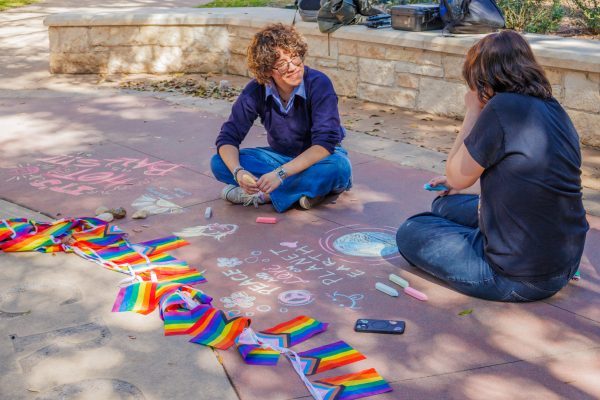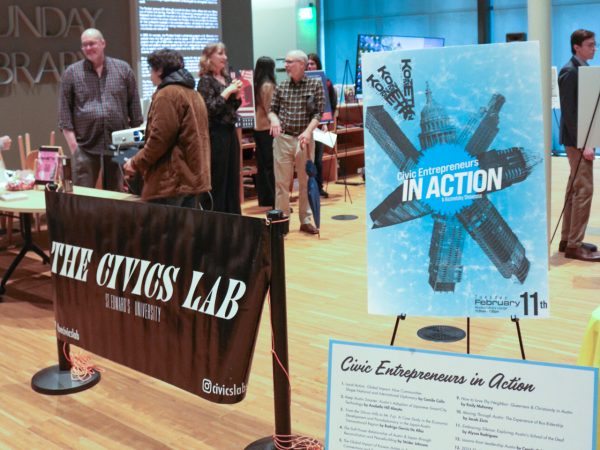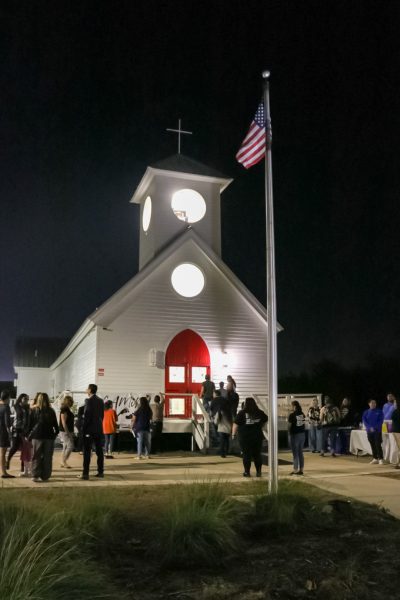Seminar displays student research
Students, faculty and guests gathered at the John Brooks Williams Natural Science Center and Moody Hall for the 19th annual Senior Seminar Symposium on March 25.
Sponsored by the School of Natural Sciences, the event featured 72 student presenters from seven math and science fields: biochemistry, chemistry, bioinformatics, biology, mathematics, forensic chemistry and computer science.
The event is called the Senior Seminar Symposium because students enrolled in senior seminar courses in their respective fields presented for the symposium. Traditionally, students with a senior standing are enrolled in the senior seminar, regardless of expected graduation date.
The symposium had two sessions. Presentations were held in classrooms in the science building and in Moody Hall, with a break for refreshments on the second floor of the science building.
Presentations were 20 to 30 minutes in length, and topics ranged from water quality in urban Austin to a treatment program for tuberculosis.
Biology major Leticia Guerrero, mentored by Professor Osvaldo Hernandez, presented research on the relationship between impervious cover — the amount of land that is covered by buildings, roads, parking lots and other man-made materials — and the number of different species of macroinvertebrates, or organisms without backbones that are visible without a microscope, in 14 watersheds in Austin.
Slides on Guerroro’s PowerPoint presentation displayed diagrams that explained how impervious cover can greatly “impact the way the water is infiltrated through the ground.” This affects water quality as the water collects pollutants in its path, and this in turn can impact the diversity of macroinvertebrates.
Biology major Troi Jorgenson, also mentored by Hernandez, conducted and presented research on water quality in Austin in a study entitled “Biological Assessment of Wet Pond Efficacy Using Benthic Macroinvertebrates.” She collected samples of macroinvertebrates at Blunn Creek to determine the effectiveness of the Best Management Practices at St. Edward’s University. BMPs such as the flood control pond located between the parking garage and the St. Edward’s apartments help treat negative effects of impervious cover by holding storm runoff and releasing it slowly into the adjacent Blunn Creek.
“BMP is effective because when comparing upstream and downstream, water quality is the same,” Jorgenson said of her research.
Aven Garms’ presentation focused on her research about directly observed treatment, short-course (DOTS), a World Health Organization program.
“[DOTS] has been globally accepted as the most efficient way to treat tuberculosis and to prevent re-occurrence with more deadly, multi-drug resistant forms [of tuberculosis],” Garms said in her presentation abstract.
Some students attended the symposium for university course credit, such as students from the Natural Sciences Living and Learning Community.






